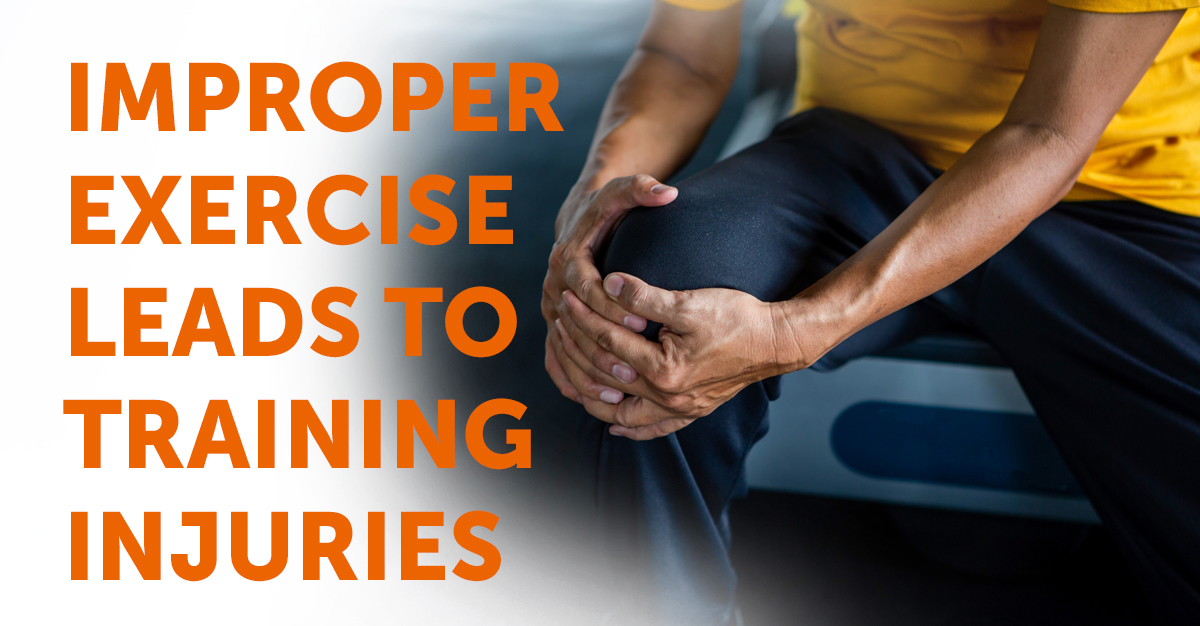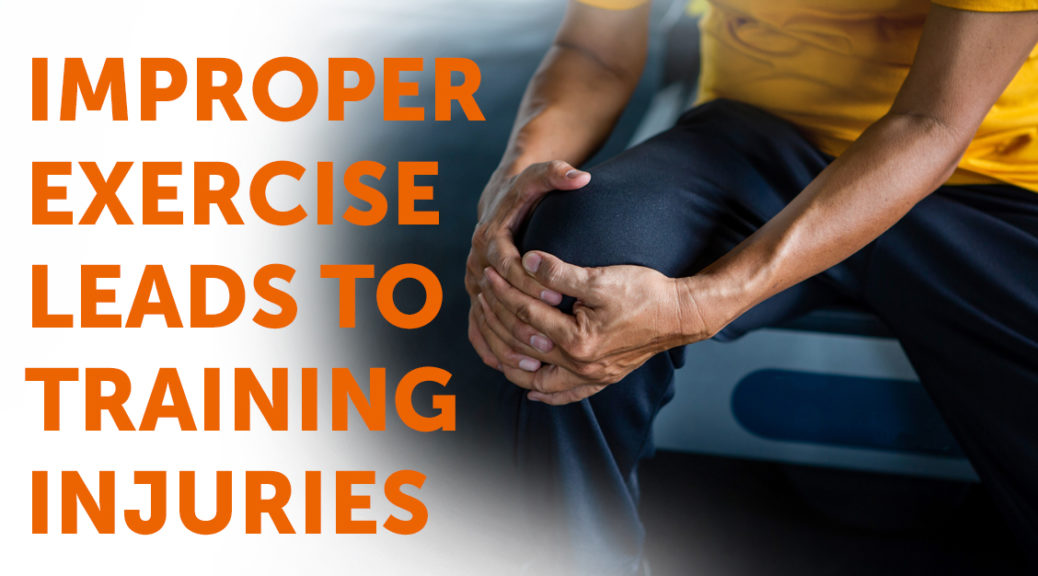
The amount of physical activity you need depends on your individual fitness goals and your current fitness level. It’s important to start within your abilities and to listen to your body’s cues in terms of pain and injury. If you experience a training injury and your body starts to ache past the point of normal muscle soreness, your body is trying to tell you that something is wrong. For a short time, you’ll be able to push through the ache, but eventually, a breakdown will happen, and weakness and lack of flexibility will begin. Once you have a breakdown, the pain will happen and more than likely you will stop training. We want to help you before you get to a breakdown.
Training Injuries
Training injuries can be sustained from weight training, martial arts training, and sport-specific training. Common injuries include:
- Strain/Sprain (commonly called a pulled muscle)
- Tendinitis, Back/Neck Pain, Tennis Elbow (Inflammation of the tendon fibers that attach the forearm extensor muscles to the outside of the elbow).
- Carpal Tunnel: Numbness, tingling, or a dull sensation of the thumb, index finger, and middle fingers due to compression to the median nerve in your wrist.
- Muscle Tear/Rupture
- Separated or Dislocated Joint (shoulder, hip, knee)
- Bursitis: Tightness in the hip or pain radiating down the lateral thigh contusion
Running Injuries
Overuse musculoskeletal injuries occur frequently in runners. Proper stretching and training principles can reduce your risk of developing a running injury.
- Shin Splints: An overuse injury of the anterior or posterior tibialis muscles, characterized by pain or soreness down either side of the shin. Technically, this condition is tendinitis or inflammation of the tendons/muscles that attach to the tibia.
- Achilles Tendinitis: Inflammation of the Achilles Tendon with possible thickening or thinning of the tendon and associated with pain resulting from overuse, overstretch, or poor flexibility. Hills or jumping activity will exacerbate this condition.
- Plantar Fasciitis: Inflammation of the plantar fascia, which is the connective tissue supporting the arch of the foot. There may be point tenderness at the heel and arch. This condition usually occurs with increased mileage or won/unsupported shoes. This condition may lead to heel spurs.
Prevent Injury While you Train
Injury can happen at any time, but there are steps you can take before during, and after your run to help prevent long-term pain. Prior to your run allow yourself at least a five-minute warm-up. Suggestions include jumping rope, jumping jacks, light jogging, or a combination. After your warm-up takes the time to gently stretch your muscles. Remember not to bounce.
While you are training it is important to use the proper equipment. This includes shoes for your foot type (high arch, flat foot, neutral foot), comfortable clothing, and appropriate socks. If the shoe is fitted to your foot, you will need to change running shoes every 400 miles. Even sooner if wear has occurred to the foot platform. Also make sure to change the running path often, aka different locations, terrains, surfaces, and directions. Cross-training is also important. We recommend using a Stairmaster or elliptical trainer, biking, swimming, yoga, Pilates. After a run, it is important to cool down with more intense stretching than the warm-up.
How Physical Therapy Can Help
TRAINING ASSESSMENTS
- Educate on faulty or improper posture or body mechanics with training
- Educate and help with techniques on exercises that help your muscles stretch farther. Flexibility training helps prevent cramps, stiffness, and injuries and can give a wider range of motion.
- Correct muscle imbalances through flexibility and strength training
- Endurance training
- Alleviate pain
- Correct improper movement patterns
RUNNING ASSESSMENTS
- Modify training when you have a minor ache and pain (This does not always mean you need to stop training)
- Get assessed for weakness and flexibility issues to address biomechanical deficits. A therapist can videotape your running to look for biomechanical deficits that you may have while running
- Look at foot mechanics for proper shoe type, stability, motion control, and neutral/cushion shoes
Find a PT
We have talented teams of physical therapists throughout the U.S. that can help you get the care you need. Whether you need training injury prevention or recovery, our specialists have the skills and know-how to get you back to your workout routine or sport safely.

